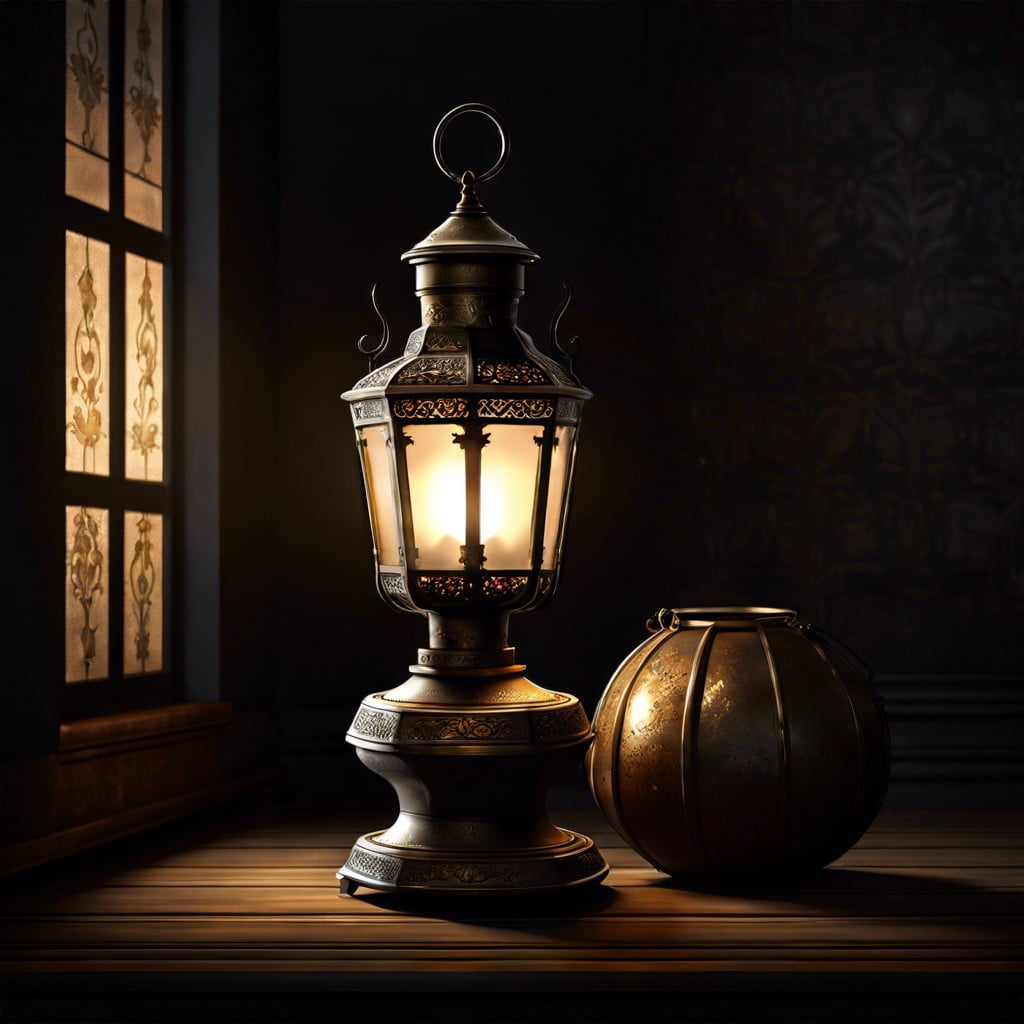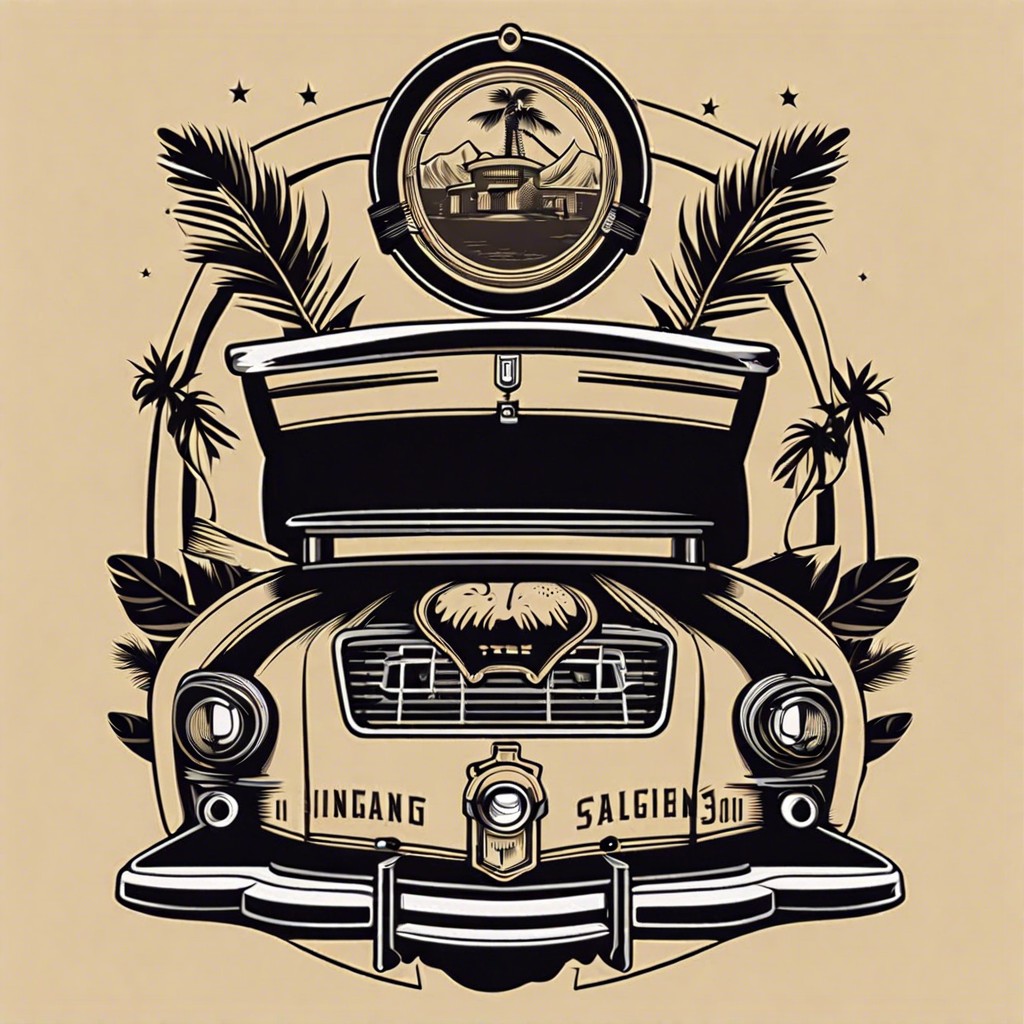Last updated on
Discover the intriguing history and definition of a lanthorn because its significance in society extends far beyond its fundamental use as a source of light.
Key takeaways:
- A lanthorn is a lantern made with translucent horn panels.
- The word “lanthorn” comes from Middle English and French.
- Lanthorns were used for portable lighting in various historical contexts.
- Traditional lanthorns were made with horn, wood, and metal.
- Lanthorns have symbolic significance in literature and cultural contexts.
Definition of Lanthorn

A lanthorn is a type of lantern historically crafted with sheets of horn as panes. These panes were made translucent by treating the horn, allowing light to pass through while protecting the flame from wind and rain.
Primarily used before the advent of glass that was affordable and sturdy enough for use in lanterns, these devices were essential for illumination and could be carried by hand or hung up to light an area.
They provided a safer option for portable light sources as the design prevented the flame from easily igniting nearby objects.
Etymology of the Word Lanthorn

The term “lanthorn” has its linguistic roots in the Middle English “lanthorne,” derived from Old French “lanterne,” likely adapted from Latin “lanterna,” which denotes a lamp or lantern.
The English adaptation “lanthorn” specifically evolved due to the transparent horn panels that composed the lantern’s sides, distinguishing it from those with glass panels.
The use of horn provided a resilient and less costly option for people seeking a portable and protected light source.
It is the horn, a material readily available from cattle and other livestock, that gave the “lanthorn” its distinct name and characteristics.
Over time, the “horn” element became phonetically blended with the object it described, encapsulating the utilitarian connection between the resource and its application in everyday life.
Historical Uses of Lanthorns
Lanthorns have been integral to the fabric of history, guiding individuals through the literal and proverbial dark. In the Middle Ages, they served as portable light sources, commonly used by individuals traveling by night or working in poorly-lit conditions. Their design allowed for the protection of the flame from wind and rain, thus reducing the risk of accidental fires—a serious concern when cities and buildings were largely constructed of wood.
By the 16th and 17th centuries, lanthorns were particularly favored by night watchmen and carriage drivers. These predecessors to modern streetlights and vehicle headlights provided a necessary beam of visibility for undertaking nocturnal activities safely. In rural settings, farmers leveraged these devices during early morning and late-night chores, particularly in barns and fields, where electrification was not yet a commodity.
On a strategic note, during military campaigns, soldiers used lanthorns for signaling and illumination while keeping the light concealed from distant enemies. This discreet way of maintaining communication and visibility highlighted the lanthorn’s role as a tactical tool in warfare.
Furthermore, their use can be traced back to maritime activities. They were commonly hung on ships to signal positions and warn of hazards, aiding in the navigation of treacherous waters at night. This application underscores the importance of lanthorns in safety and communication long before the advent of modern technology.
Materials and Construction of Traditional Lanthorns
Traditional lanthorns were commonly crafted from lightweight materials, such as thin, translucent sheets of horn from cattle, especially from oxen. These sheets were scraped to ensure semi-transparency and then treated to become more pliable.
After the preparation of the horn, the sheets were cut to flat panels and inserted into wooden frames, which were often rectangular or hexagonal in shape. The frames provided structure while also allowing access to the interior space for a light source, usually a candle or oil wick.
Metal elements, like iron or brass, were sometimes used to reinforce the corners or to create wire guards in front of the horn panels, protecting the delicate material from heat and external damage. The top of the lanthorn typically included a vent to allow heat and smoke to escape, preventing blackening of the horn and reducing fire hazards.
For carrying or hanging, a handle or a ring was attached. This portability was essential for the utility of lanthorns, notably in maritime applications where their light guided sailors during night navigation.
With meticulous construction, these lanthorns provided a safe enclosure for open flames, optimizing the light output while shielding the flame from winds and drafts. Their clever, durable design stands testament to the resourcefulness of past craftspeople in creating an essential lighting tool from available materials.
Differences Between Lantern and Lanthorn
Traditional lanterns and lanthorns, while similar in function, differ in specific aspects, chiefly their construction and the materials used. Lanterns are generally made of metal, glass, or a combination of both. They are intended to protect a flame or light source from the wind and are designed to be transparent to maximize the light emitted.
Conversely, the term “lanthorn” specifically refers to a lantern made with horn panels instead of glass. Horn, when treated, becomes translucent and was historically used for its durability and the soft, diffused light it produced, which was less harsh than clear glass. This feature was particularly advantageous before the invention of frosted glass.
The construction of a lanthorn was also typically more rudimentary, often associated with earlier periods when more sophisticated materials or manufacturing techniques were not widely available. Lanthorns were common among those who needed a portable and resilient light source, such as watchmen or those at sea.
In essence, the distinction lies in the details of their make-up; one is a product of a more industrialized approach with glass panels, while the other harks back to an era where animal horn served an essential purpose before advancements in material science.
Lanthorns in Literature
Lanthorns frequently appear in literary works to evoke a bygone era, symbolize hope, or to underscore the themes of guidance and illumination. Authors such as Shakespeare include lanthorns in their work to highlight a character’s intent or the atmosphere of a scene; for instance, in “A Midsummer Night’s Dream,” a character holds a lanthorn, signaling the approach of humans to the fairy realm.
In other narratives, these devices may serve as metaphors for enlightenment or self-discovery. The use of lanthorns to navigate passages or suggest a period setting further emphasizes their role in literature as bearers of light both literal and figurative.
Decline in Usage and Reasons
The advent of newer, more efficient lighting technologies significantly reduced the prevalence of lanthorns. With the introduction of kerosene lamps in the 19th century, followed by electric lights, the need for the more primitive, often cumbersome lanthorns diminished.
These traditional devices, which required regular maintenance and were susceptible to weather conditions, couldn’t compete with the convenience and brightness provided by their modern successors. Moreover, advancements in manufacturing processes and material sciences have led to more durable, portable, and safer lighting options, further sidelining the lanthorn to a largely historical or decorative role.
Lanthorns in Nautical History
Navigating treacherous waters and unfamiliar shores was a formidable challenge for sailors of the past. Lanthorns, with their protective casings, were vital tools:
- Safety and Signaling: Ships were equipped with lanthorns to ensure safe passage during the night or in foggy conditions. The soft, diffused light was also used for signaling between ships or to shore, as open flames could be dangerous onboard due to the presence of gunpowder and other flammable materials.
- Construction: Made from materials like horn, glass, and metal, these devices shielded the flame from wind and rain, preserving the light that was essential for the navigation during darkness.
- Lit Beacons: Fixed lanthorns served as early lighthouses, known as ‘beacon lights,’ guiding vessels to safety. These beacons were pivotal to night-time coastal navigation.
- Evolution: As nautical technology advanced, lanthorns evolved too. The incorporation of Fresnel lens technology in the 19th century greatly amplified the light’s intensity and reach.
Through necessity and ingenuity, lanthorns illuminated the sailor’s way, contributing significantly to the era’s maritime successes.
Modern Adaptations and Uses of the Term Lanthorn
Despite the decline in traditional usage, the term ‘lanthorn’ continues to resonate in contemporary settings. Artists and designers often draw inspiration from historical artifacts, and the enchanting design of the lanthorn is no exception. Today, you may find lanthorns crafted with modern materials like acrylic or used as thematic decor in restaurants and boutique hotels aiming for a vintage or nautical atmosphere.
Festivals and historical reenactments also make use of lanthorns to create an authentic experience. During such events, you might see participants carrying them to illuminate pathways or as part of a ceremony, honoring the bygone eras when these devices were especially prevalent.
Additionally, ‘lanthorn’ occasionally appears in business names or book titles, evoking a sense of antiquity and reliability. It’s also employed in educational contexts, specifically in traditional crafting workshops, where participants learn about and create their own lanthorns using techniques similar to those of the past.
Lastly, the term has found a place in modern lexicon as a metaphor for transparency and illumination—echoing the original function of the lanthorn—to bring light to dark places.
Lanthorn As a Symbol in Cultural Contexts
Throughout various cultural contexts, the lanthorn has taken on symbolic meaning, often representing light in the darkness, guidance, and safety. In literature and folklore, a lighted lanthorn can signify enlightenment, the search for truth, or the dispelling of ignorance. The glow of a lanthorn held by a character may symbolize hope or the comforting presence of knowledge in a time of uncertainty.
During festive seasons and celebrations, lanthorns crafted from paper or other materials often appear as decorations, symbolizing joy and the communal spirit of the event. These are particularly prevalent in East Asian cultures during festivals like the Lantern Festival or Mid-Autumn Festival, where they represent unity and the shared light of collective hopes and dreams.
In maritime history, the lanthorn was crucial not only for lighting but also as a symbol of safety. Lighthouses equipped with powerful lanthorns served as beacons, guiding sailors through treacherous waters, effectively symbolizing a guardian that wards off the dangers of the sea.
Additionally, the lanthorn has found its way into heraldry and emblems, where it is used to represent watchfulness and vigilance. An example is in certain military insignias, where the lanthorn is included to signify readiness and the foresight to illuminate the way forward.




